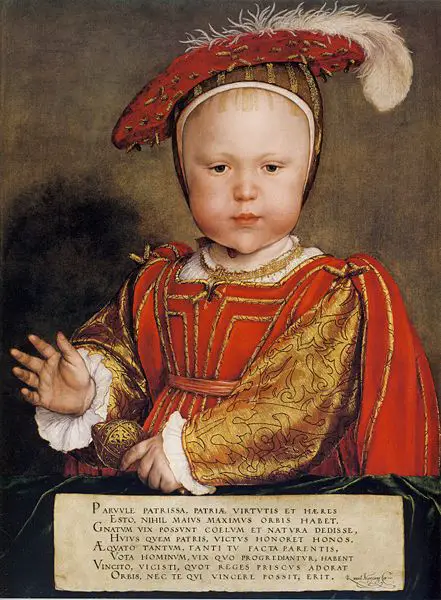 Thank you to Tudor Society member Sandra for asking this question. In her email, Sandra said:
Thank you to Tudor Society member Sandra for asking this question. In her email, Sandra said:
"Where is Anne Boleyn buried? I had always believed that after the late 1870 restoration of the skeletons found in the Chapel of St. Peter Ad Vincula that Anne as with others, George Boleyn, Jane Rochford, John Dudley, etc. were re-buried in their individual caskets under the memorial tiles in the Chapel. Although I do appreciate that the individuals may not be buried under their named tile. However, I have read recently a couple of articles which claim that the caskets are buried in the crypt of the Chapel.
Now, this may be one and the same e.g. underneath the memorial tiles this may lead to the crypt underneath."
I (Claire) can answer this as it's something I've researched and I also have all of the minutes from the meetings of the Victorian restoration team who worked on the Chapel of St Peter ad Vincula in 1876 and 1877.
We know that Anne Boleyn's remains, including her head, were taken to the Chapel of St Peter ad Vincula within the confines of the Tower of London following her execution because primary sources tell us so. Chronicler and Windsor Herald Charles Wriothesley wrote: "her bodye with the head was buried in the Chappell within the Tower of London, in the queere [quire] there, the same daye at afternoone, when she had reygned as Queene three yeares, lackinge 14 dayes, from her coronation to her death" and a document in the Vienna Archives states: "Immediately the executioner did his office; and when her head was off it was taken by a young lady and covered with a white cloth. Afterwards the body was taken by the other ladies, and the whole carried into the church nearest to the Tower of London." The "queere", or quire, mentioned by Wriothesley is the chancel of the chapel, the part that is now roped off to the public and which has the beautiful memorial tiles mentioned by Sandra above.

Chapel of St Peter ad Vincula
In 1876, the chapel was in a very sorry state and it was decided that it was necessary to do repairs. Although the team initially had wanted to leave the chancel alone, it was found that the pavement there was sinking in two places and so needed repairing. It was decided that any remains found under the floor in the church and chancel would be carefully moved and taken to the crypt while the work was carried out. The remains of seven people were found in the chancel, including the remains of a female found in the spot where Tower recorded stated that Anne Boleyn had been buried. The seven sets of remains, including those of Anne, were examined by pathologist Dr Frederick Mouat, who made his reports to Queen Victoria. The records of a meeting held on the 13th April 1877 in the Chapel of St Peter ad Vincula, minuted by Doyne C. Bell for the queen, tell us that the remains of the seven people found in the chancel in November 1876 were:
"soldered up in thick leaden coffers, and then fastened down with copper screws in boxes made of oak plank, one inch in thickness. Each box bore a leaden escutcheon, on which was engraved the name of the person whose supposed remains were thus enclosed, together with the dates of death, and of the year (1877) of the reinterment.
They were then placed in the respective positions in the chancel in which the remains had been found, and the ground having been opened, they were all buried about four inches below the surface, the earth was then filled in, and concrete immediately spread over them."
The lovely memorial tiles were then added to mark the burial positions.
Remains found in other areas of the church were taken to the crypt and taken there. The chapel graveyard is no longer in existence and remains found during work in the Tower grounds, from the old graveyard, were taken to the crypt.
I wrote a couple of detailed and referenced articles about the chapel restoration and exhumations over on the Anne Boleyn Files website:
I have an 1877 edition of the book containing all the minutes and reports from the restoration work and it's one of my favourite antique books. However, it can be read online at https://babel.hathitrust.org/cgi/pt?id=wu.89098638729;view=1up;seq=9. It's a great book as it also has biographies of prominent people buried at the Tower of London and some lovely engravings too.
Question answered by Claire Ridgway, author of eight history books including The Fall of Anne Boleyn: A Countdown, The Anne Boleyn Collection and The Anne Boleyn Collection II. Claire is also the creator of The Anne Boleyn Files blog and founder of the Tudor Society.
If you have a burning question on Tudor history that you'd like answered then please fill in the form on our Ask the Expert page.



Many thanks for answering my question.
Regards.
Sandra
That’s ok, I hope it was helpful. If you ever see Doyne C Bell’s book come up on Abebooks or Ebay (the 1877 antique version), it’s well worth getting, it’s beautiful.
There are some copies available at the moment – https://www.abebooks.com/servlet/SearchResults?sts=t&an=doyne+c+bell&tn=&kn=&isbn=
The scanned copies are not worth getting, just the original 1877 version. It’s my very favourite book in my collection.